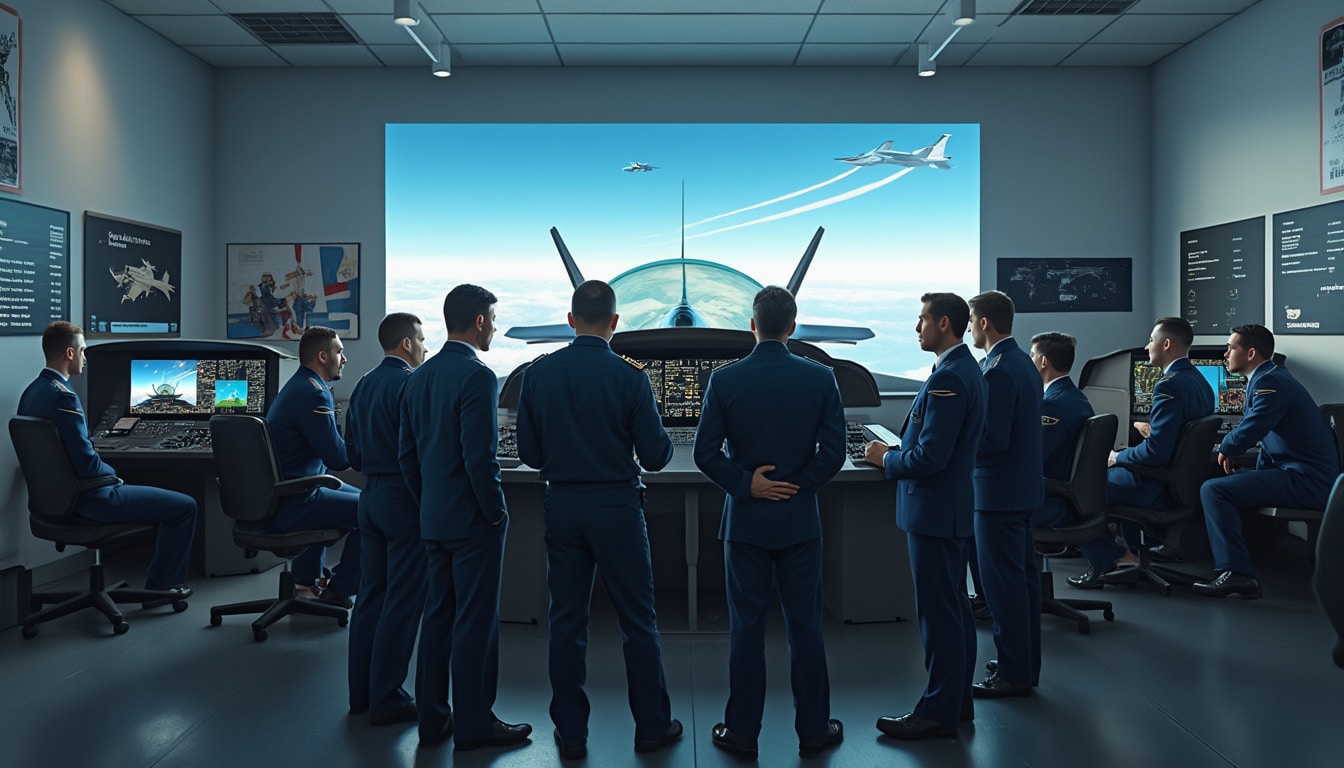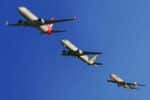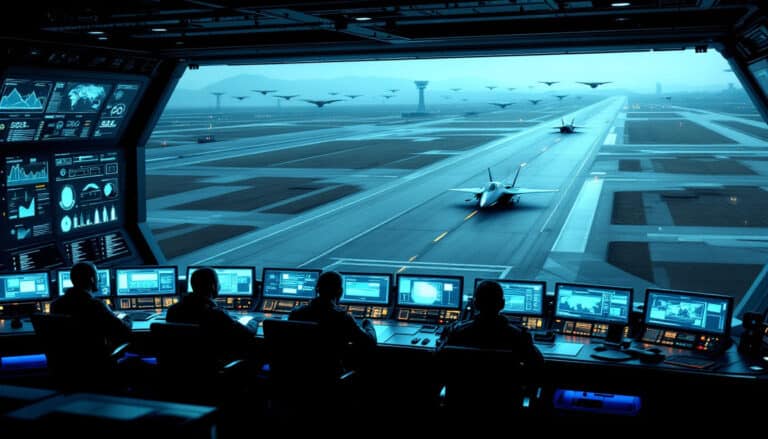The U.S. Air Force is facing an unprecedented challenge in its pilot training program. After several years of attempts, it has not succeeded in reaching its ambitious goal for fiscal year 2023. This situation is part of a worrying trend that has persisted for eight years.
The combination of maintenance issues, recruitment difficulties, and unforeseen delays has led to a deficit of about 120 pilots, with only 1,350 new aviators trained instead of the 1,470 planned. This shortfall exacerbates a pilot shortage estimated at 2,000, a deficit that complicates the necessary strengthening of personnel for global missions. Delays in repairs for T-38 Talon engines have limited the availability of training aircraft, making daily training more challenging. In response, the Air Force is intensifying efforts to retain experienced pilots, offering substantial bonuses and new career opportunities.

Table des matières
ToggleWhat explains the current pilot deficit in the air force?
For eight consecutive years, the air force has struggled to meet its annual training goal for new pilots, recording a deficit of about 120 aviators in 2023. Several factors contribute to this concerning situation. First, a series of maintenance issues have limited the availability of training aircraft, particularly the T-38 Talon, which are essential for training future fighters and bombers. Delays in engine repairs have reduced the number of operational aircraft, thereby hindering the pace of training sessions.
Moreover, recruitment and staffing difficulties have emerged, with many vacancies in training teams. Around 30 to 40% of civilian instructor positions remain unfilled, further complicating the air force’s ability to deliver training of sufficient quality and quantity. Additionally, working conditions and high demands may deter potential candidates, exacerbating the pilot deficit.
Finally, economic conditions and retention policies also play a role. While financial incentives have been implemented to encourage pilots to stay, these measures do not fully compensate for the ongoing loss of qualified personnel. These combined factors create a vicious cycle that makes it difficult to achieve set training goals.
What are the consequences of this deficit on air force operations?
The pilot deficit has significant repercussions on the operational capabilities of the air force. With approximately 1,350 pilots trained instead of the 1,470 planned, the air force must reassess its priorities regarding human resource allocation. One direct consequence is the difficulty in filling fighter pilot positions, which are essential for maintaining air superiority and responding to national defense missions.
To address this shortfall, the air force chooses to leave some administrative positions vacant, which, in the long run, can affect management and strategic planning within air units. This reallocation of resources may compromise mentoring and the professional development of officers, thus impacting the preparation of future leaders of the air force.
Additionally, the pilot deficit intensifies pressure on personnel in place, increasing the risks of burnout and premature departure. The workload can also reduce the effectiveness of daily missions, affecting the air force’s ability to respond quickly and effectively in times of crisis or conflict. In the long term, this situation may weaken the strategic position of the air force on the international stage.
What measures is the air force considering to fill this pilot shortfall?
In the face of this persistent deficit, the air force is implementing various strategies to attract and retain the necessary talent. One of the key initiatives is the introduction of retention programs offering significant financial bonuses to experienced pilots. More than 650 aviators have already benefited from these incentives, and a new program, mandated by Congress, provides contracts that can reach $50,000 per year for an additional 210 pilots.
Furthermore, the air force is exploring innovative solutions to optimize training. One of the avenues being considered is the internal production of certain spare parts for training aircraft, allowing for reduced maintenance turnaround times and increased aircraft availability. This initiative aims to minimize interruptions in training sessions and expedite the process for obtaining pilot licenses.
The air force is also interested in expanding distance training. By piloting simulators or leading classes from remote sites, the air force hopes to mitigate the shortage of civilian instructors. However, this approach is limited by the quality of internet connections, which can restrict its deployment on a large scale.
How does this deficit affect the training and progression of current pilots?
The lack of available pilots has a direct impact on the quality and effectiveness of current training programs. With training aircraft often unavailable, trainee aviators must wait longer to access flight sessions. At the end of summer 2023, more than 900 candidates were waiting to start their training, some having to wait up to nine months.
This prolonged waiting can lead to demotivation among aspiring pilots, resulting in a loss of interest or even desertion from the training program. Furthermore, delays in training disrupt the promotion and career progression timeline, slowing the number of qualified pilots ready to assume responsibilities within the air force.
To navigate these challenges, the air force has reduced the duration of pilot training to seven months, incorporating technologies like virtual reality to accelerate learning. Although this modernization aims to make training more efficient, current infrastructures do not always meet the demand, creating a bottleneck in the training pipeline.
What are the future prospects for the pilot training program?
Despite current challenges, the air force is taking a proactive approach to strengthen its pilot training program. One of the ongoing initiatives is the simplified version of fighter pilot training, combining introductory and advanced practices on T-38 Talon jets at the Columbus, Mississippi base. This streamlined version represents about 15 to 20% of the total syllabus, but initial feedback from pilots indicates opportunities for improving the overall efficiency of the training pipeline.
At the same time, the air force is betting on a gradual transition to simulators for mobility pilot training, replacing the T-1 Jayhawk jets that will be phased out by 2026. The first graduates of this program are already showing satisfactory performance in formal training units, with no negative trends in their performance.
Finally, collaborations with specialized companies, such as CAE, allow for outsourcing certain parts of training, such as initial rotary-wing flight training. This partnership aims to diversify training methods and increase overall capacity without requiring new major infrastructures.
With these adjustments and innovations, the air force hopes not only to fill the current pilot deficit but also to modernize and strengthen its training program to meet the future demands of modern aerial combat.























